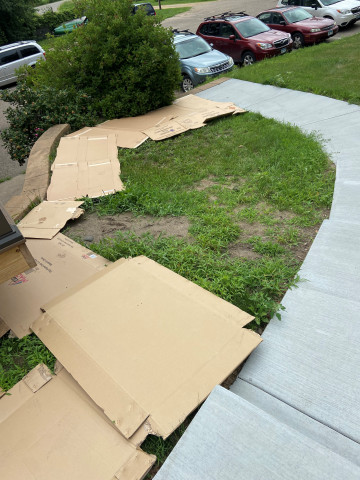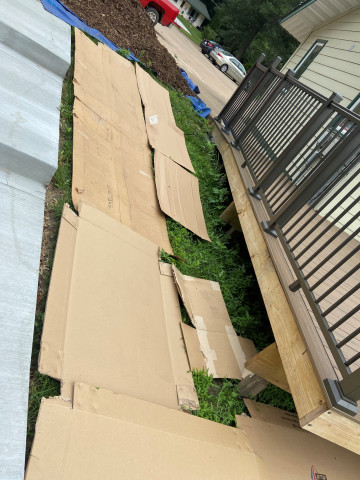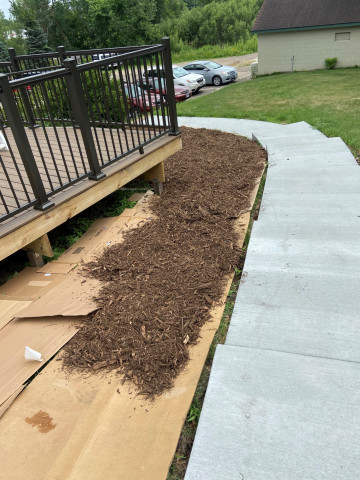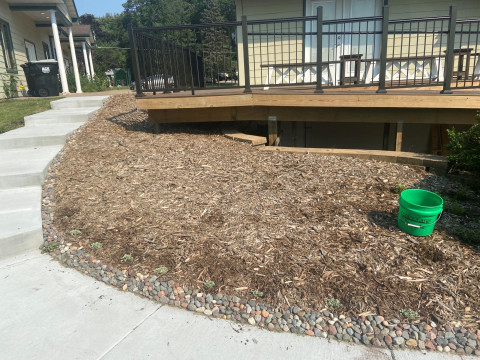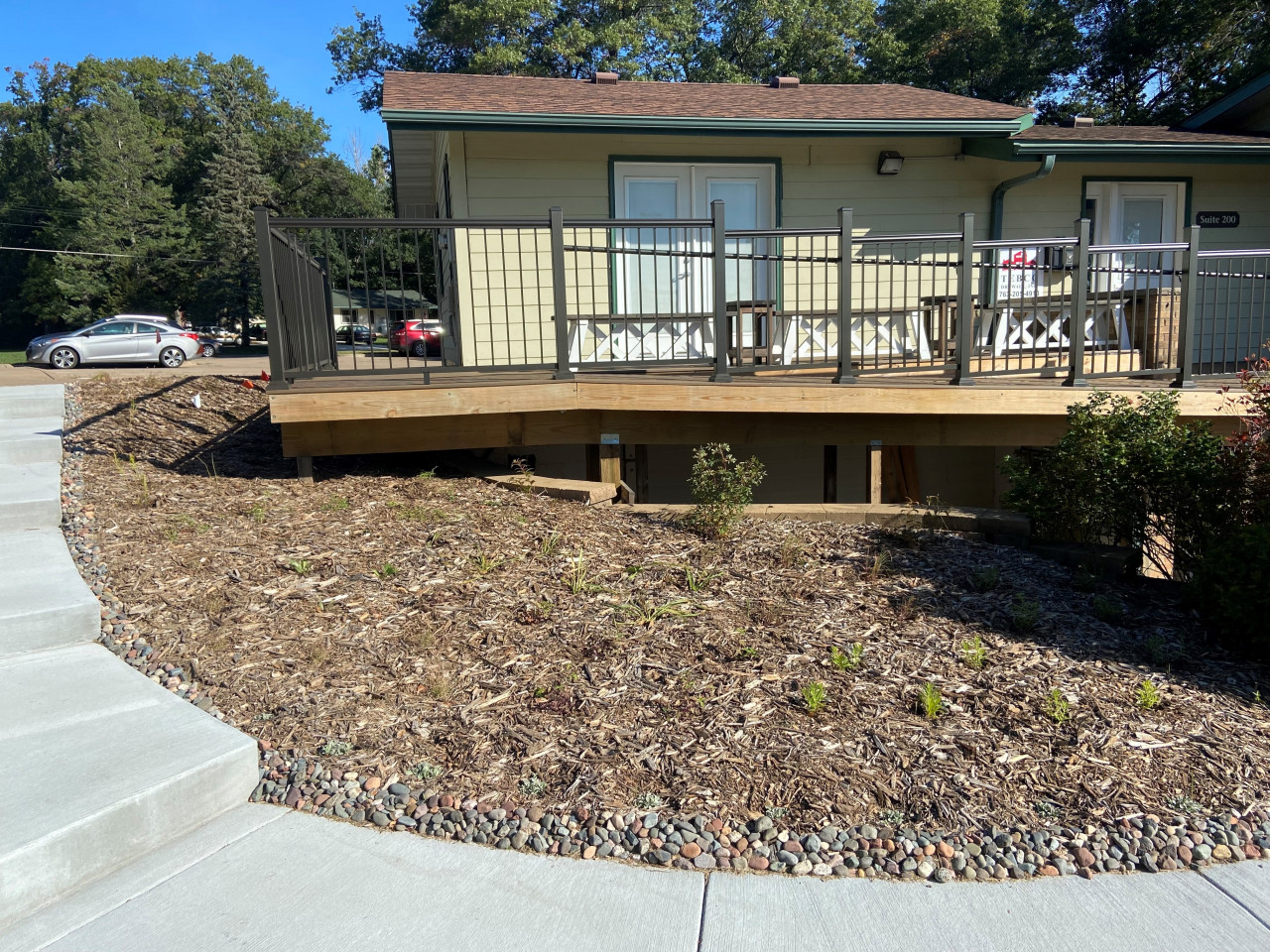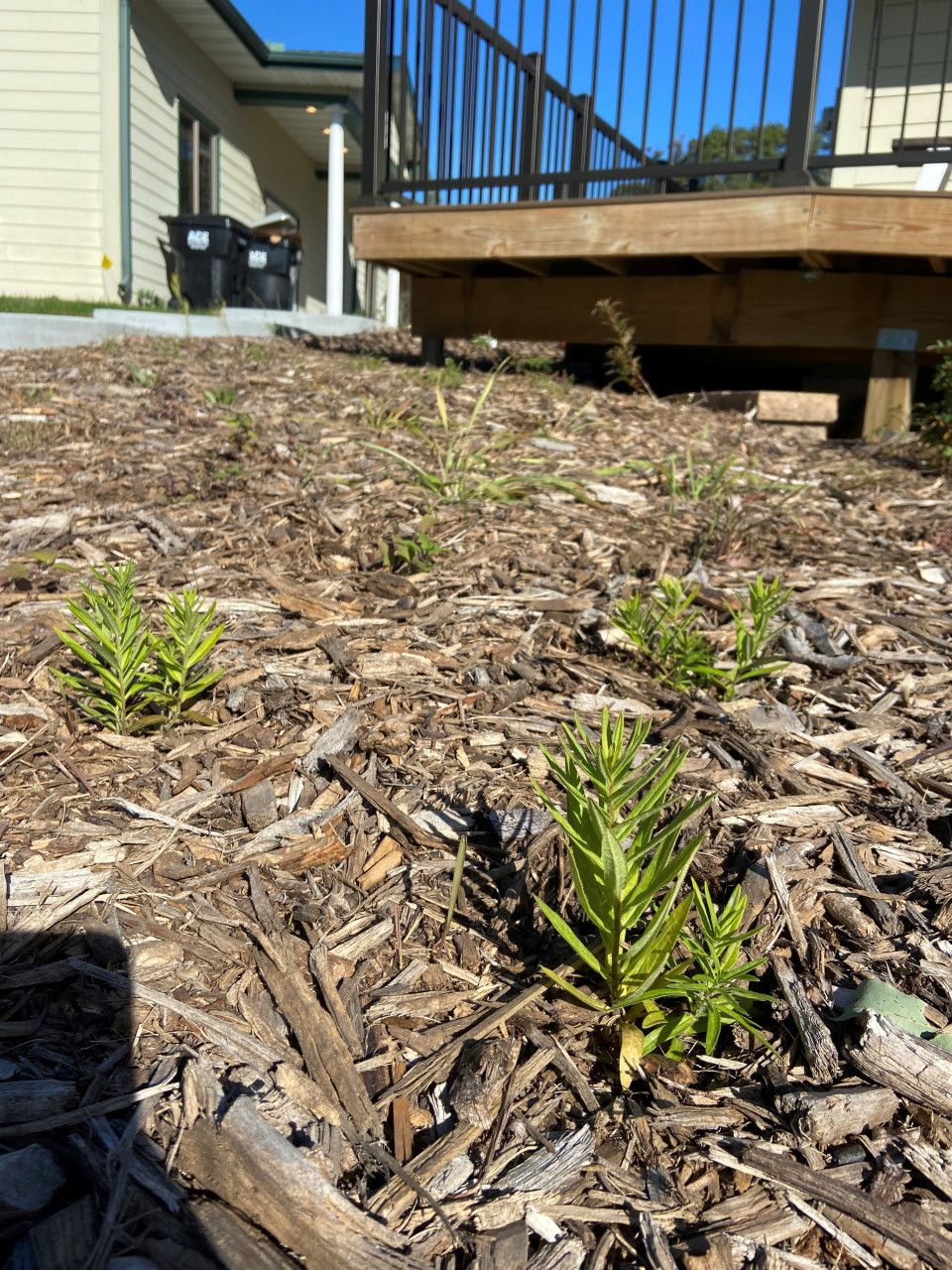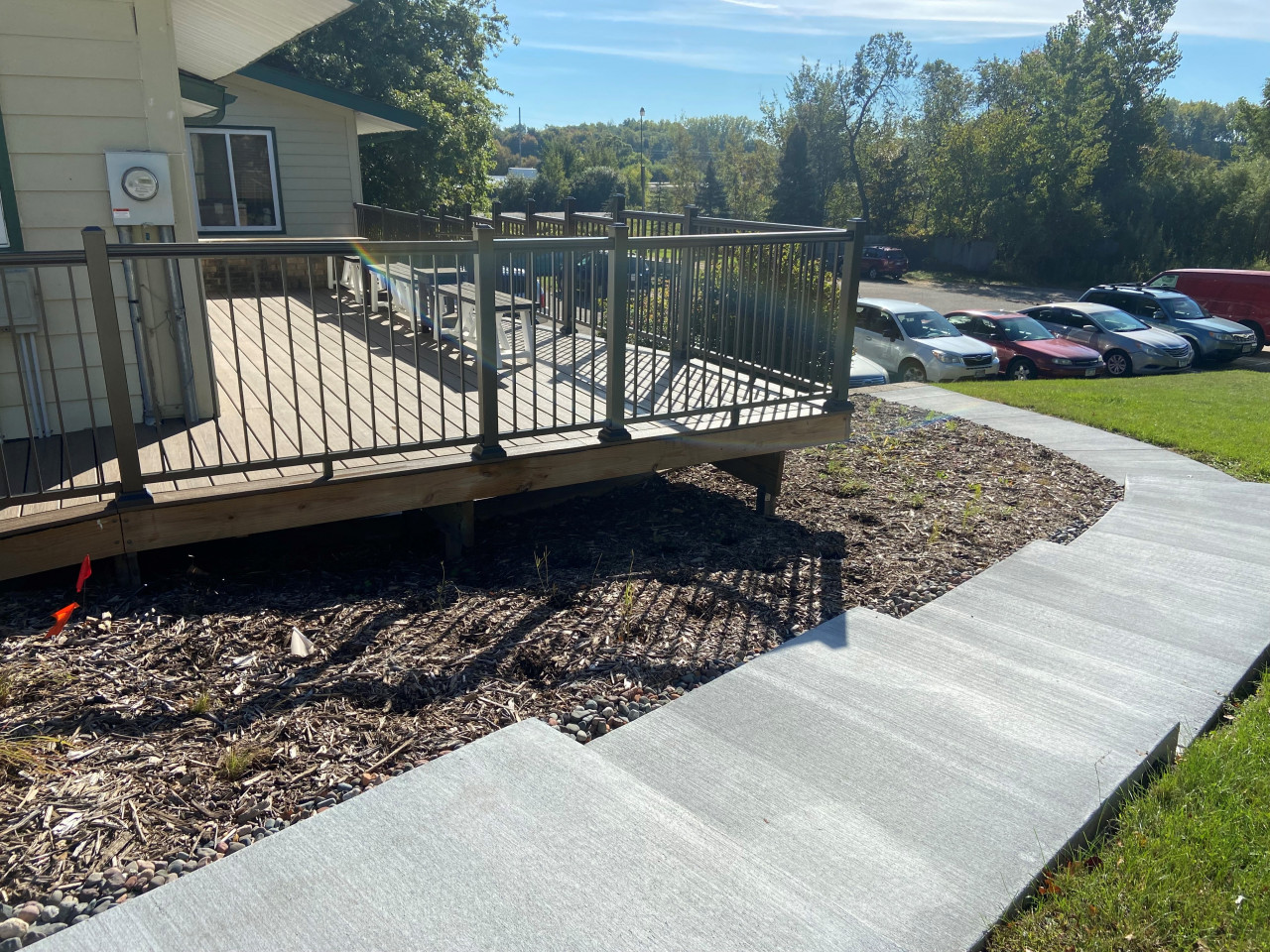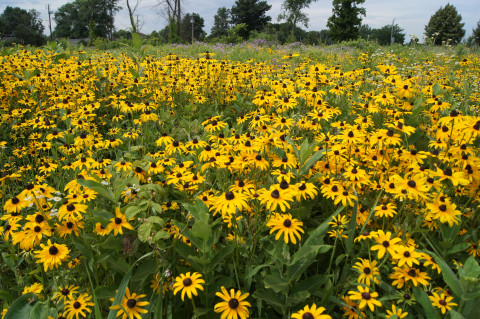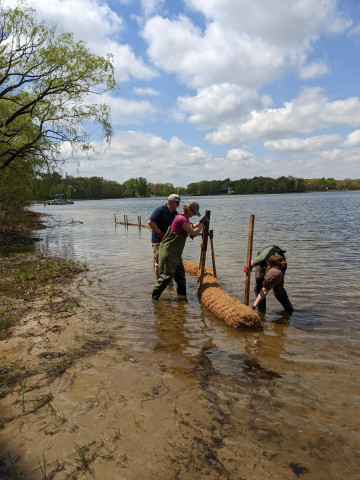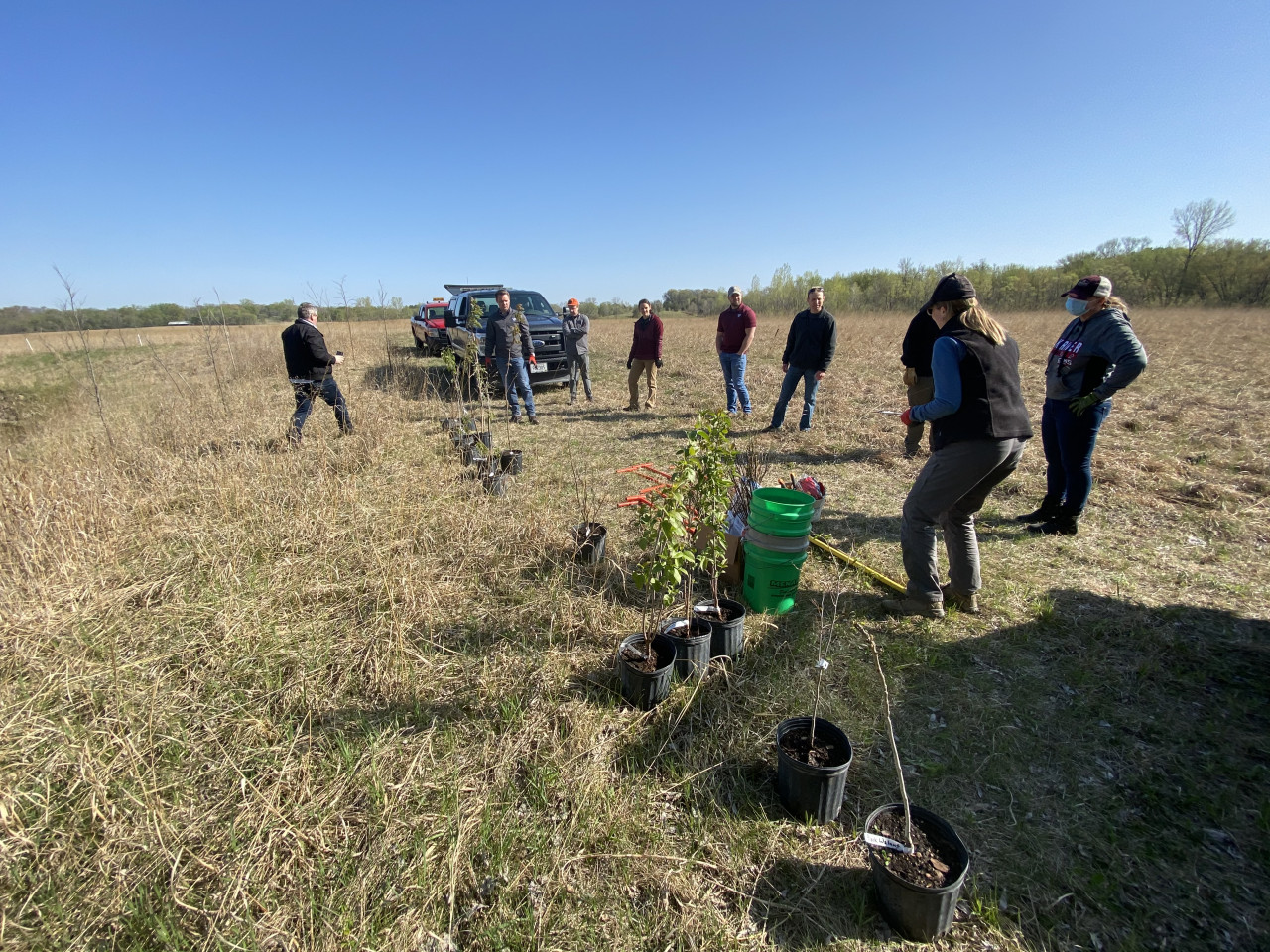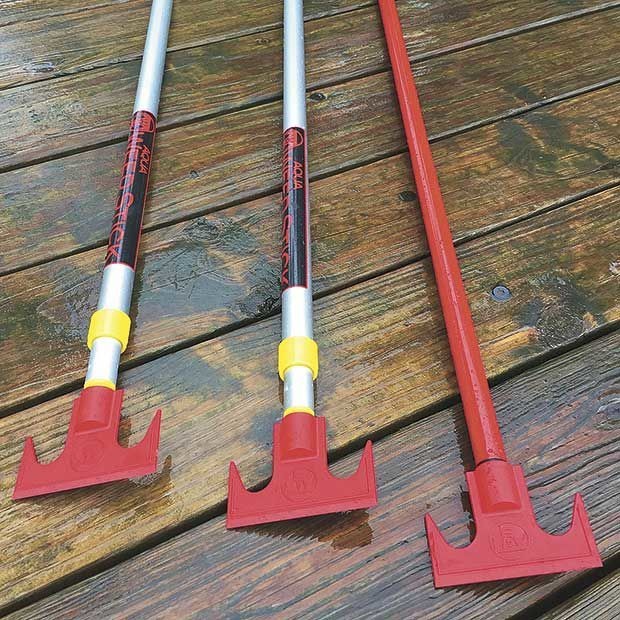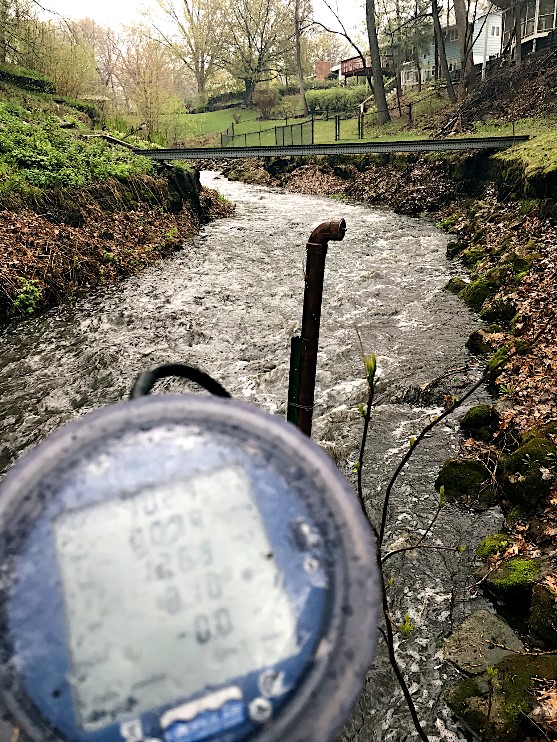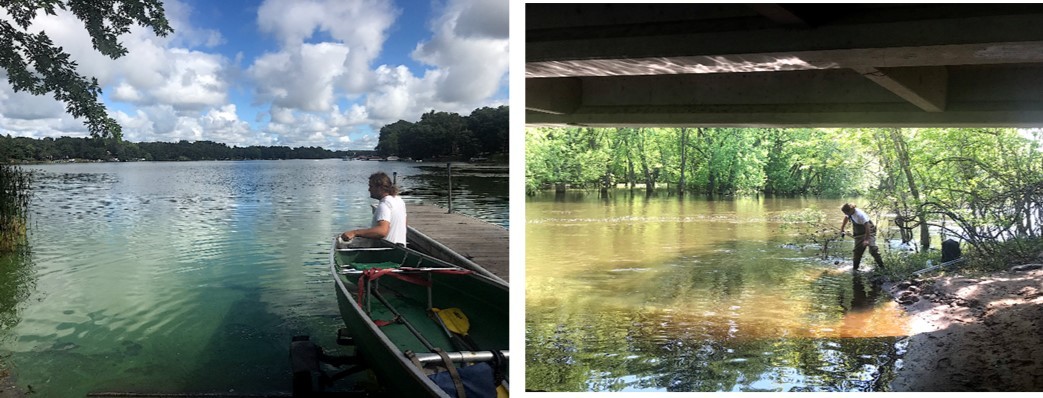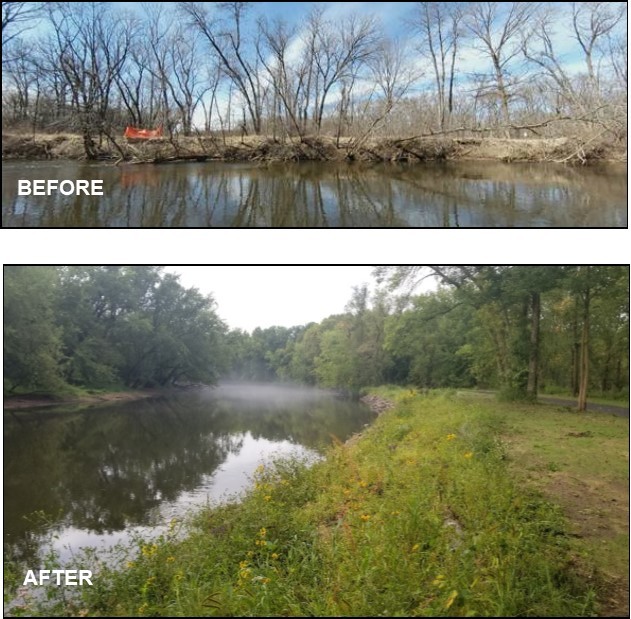ACD serves all of Anoka County's 369,000 residents, spanning 284,000 acres, 72 lakes, 446 miles of streams and rivers and critical groundwater resources. ACD staff have been busy working on projects to improve and maintain natural resource throughout Anoka County. Projects include lakeshore & streambank stabilizations, rain gardens, habitat restorations, and many more. Learn more about what is going on in your neighborhood by taking an interactive project tour today! For more information contact Kathy Berkness, Office Administrator, at
Plant species that are "native" to a local area (i.e., grow there naturally) provide necessary food and habitat for pollinators and enhance soil and water quality. Outdoor spaces that are in covered in turf provide very few benefits to pollinators or the environment, so frequent pockets of natural spaces are critical in developed areas. We recently converted part of our office property from an area that was annoying to mow into beneficial pollinator habitat! Here's how we did it:
In early summer, we used "sheet mulching" to kill off the grass and weeds. If you can plan to have a couple of months before planting, this is an easy method to prepare a site without using herbicides. The future garden space was fully covered in cardboard sourced from our local recycling facility and then covered with a couple inches of mulch. This effectively smothered existing weeds.
We selected 11 native wildflower species, 2 native shrub species, and 2 native grass species for the garden that will thrive with the amount of natural sun and water that the spot gets. Adding wildflowers is a no-brainer to provide nectar for pollinators, but adding grasses sometimes gets overlooked in pollinator gardens. Native grasses provide homes for insects to overwinter in and add beautiful texture to a space! There are many great places to order native plants from in Minnesota; we used Minnesota Native Landscapes and Glacial Ridge Growers.
Since our garden is next to a sidewalk, it was lined with river rock to create a cleaner look and contain the mulch.
In early fall, the plants arrived and were planted. By this time, the cardboard underneath had broken down enough that it was easy to rip gaps in it to dig holes for the plants. Autumn planting gives plants an edge for developing strong roots in their new home and is a great option if you miss the spring planting window. The plants were spaced about 1.5 feet apart to leave them with room to grow into their full-sized forms. The already-present mulch will help hold in water and continue to suppress weeds.
It will be exciting to watch these new plants grow over the coming year to create a beautiful spot that will support some of our essential pollinator species in Anoka County.
You can also follow these steps to convert areas of your property that may not get much traffic or are hard to mow into a space that will benefit everyone!
Here's our version of a popular kid quiz game. Below are sets of three statements. Can you tell which one is the lie? See answers at the bottom of the page!
#1: About the Anoka Conservation District's (ACD) origins…
- a) ACD began with the purpose of replanting trees lost to the devastating 1939 Anoka tornado.
- b) We started in 1946 with focus on stemming Dust Bowl era erosion.
- c) ACD was brought into existence by the voters of Anoka County through a referendum.
#2: About the Anoka Conservation District (ACD)…
- d) We're a department of Anoka County that focuses on natural resources issues.
- e) ACD's elected Board of Supervisors sets the policy and direction of the District and staff work to bring it to fruition.
- f) Our staff of 12 includes experts on water quality projects, upland habitat restoration, wetlands, and more.
#3: About ACD's function…
- a) ACD offers technical and financial incentives to encourage conservation activities and works with willing landowners to make them happen.
- b) By creating reasonable standards and issuing permits, we are able to stem negative impacts of development.
- c) We keep our finger on the pulse of our natural resources with an extensive program of monitoring and inventory done in partnership with water management entities.
#4: About ACD's funding…
- a) At $0.41 per capita for general services, ACD funding from the county is the lowest funded soil and water conservation district in MN.
- b) ACD invented, patented, and sells a product that has over $500K in annual sales.
- c) In 2022 our elected supervisors reduced our tax levy by 5%.
#5: ACD's accomplishments…
- a) In 2021 we installed 66 projects for water quality and habitat.
- b) We simultaneously manage 10 different grants that are used for projects.
- c) Our biggest project in 2021 was nearly ¼ mile of stabilized Mississippi Riverbank.
#6: Collaborations…
- a) ACD serves as the contracted administrator for three watershed organizations to reduce duplication and coordinate.
- b) Cities, lake associations, watershed groups, and landowners voluntarily contribute match to help us secure grants for projects of mutual interest.
- c) We spend a lot of time working with people who are under mandatory permit requirements to do conservation projects.
#7: Stuff we'll help you pay for…
- a) Our Lawns to Legumes program encourages pollinator habitat. (Legumes are a class of veggies including beans, peas, & clovers).
- b) Our Green Fields, Blue Water Initiative with the Minnesota Twins will install "smart" irrigation systems on community baseball fields to avoid watering when rain is in the immediate forecast or a game is scheduled to be played.
- c) Our Septic Fix Up grants help folks in deep crap with repair or replacement a failing septic system. It helps protect lakes and groundwater.
#8: Office life…
- a) We have "companion ducks" at the office to calm our nerves. When they migrate in winter, staff get pretty edgy. Call during summer.
- b) We celebrate casual Fridays on Thursdays. When actual Friday arrives, it's a little depressing. Call before Friday.
- c) Our staff "wellness program" is all about encouraging naps. Life is a race already. Please call after nap time.
ANSWERS
#1: The lie is (a) -- While the 1939 tornado was devastating, it was the Dust Bowl era of drought that prompted a need to connect farmers with practices that were less erosion-prone. We have evolved to include urban and sub-urban conservation practices.
#2: The lie is (a) -- ACD is not an Anoka County department. We are separate, with our own elected supervisors.
#3: The lie is (b) -- We don't have any regulatory authority nor issue permits. We work with willing landowners only.
#4: The lie is (c) -- We don't have tax levy authority. We do receive some funds from the county and grants that originate from taxpayers, but we control none of it.
#5: The lie is (b) -- At any given time we have 20+ different grants totaling over 4 million dollars!
#6: The lie is (c) – We work with willing landowners only. We don't do regulation.
#7: The lie is (b) -- Nice idea, but not yet reality. Consider smart irrigation for your home.
#8: The lie is…all of them. :)
Anoka Conservation District, in partnership with Anoka County Parks, received a MNDNR behavior change grant in the amount of $4,992.74 to pilot a strategy to reduce the spread of aquatic invasive species. The pilot behavior change intervention strategy will be delivered to the target audience of boaters and anglers through the installation of new boat cleaning equipment at 5 high traffic boat launches and education provided by on-site AIS inspectors. The project will influence positive behavior change in boaters and anglers by removing barriers such as lack of access to tools/equipment for properly cleaning boats/trailers, lack of space to clean boat or pressure caused by high-traffic boat launches, and lack of knowledge of how to use cleaning tools/equipment. We will lay the groundwork by conducting research on baseline boater behavior this summer, install the weed removal stations in spring of 2021, and collect observational data on weed removal station use and commitments to use the stations from boaters throughout the 2021 boating season. The results of the pilot study will be used by the DNR in future AIS behavior change strategies throughout the state.
2019 was another successful monitoring season for The Anoka Conservation District (ACD). Strong partnerships with watershed districts, watershed management organizations, and local lake associations, allowed ACD to implement a variety of monitoring programs including; daily precipitation totals (12 volunteers), lake levels (25 lakes), lake water quality (11 lakes), stream hydrology (12 sites), stream water quality (18 sites), stream benthic macroinvertebrates (3 Anoka County schools), shallow groundwater levels in wetlands (19 sites) and deep groundwater levels in observation wells (24 sites).
2019 ended up being the wettest year on record for the state of Minnesota with a state-wide average of 35.51 inches, breaking the previous record of 33.93 inches set in 1977. Due to the banner year Minnesota had with rainfall, we saw historically high water levels in lakes and streams and higher than average groundwater levels in many wetlands and groundwater wells. 2019 was a great year for overall water quality, with many of the lakes and streams showing improvements compared to the historical average.
With a growing population and ever-increasing development, it is more important than ever to have the ability to make informed decisions when it comes to land use management and for local leaders to have an understanding of how those decisions may affect natural resources. Water resources are rapidly declining in quality and quantity throughout the metro. Anoka County is fortunate enough to still have many pristine natural areas but it will take a team effort to keep them that way.
The Anoka Conservation District partnered with Anoka County Parks to stabilize 310' of eroding riverbank within Rum River Central Regional Park. Prior to the project, the bank was severely eroding and undermining sections of a paved trail. The stabilization project is now complete and included the following elements:
- Minimal riprap at the bottom of the slope within the zone of frequent water level fluctuation where vegetation does not grow well,
- Grading above the riprap to the top of the slope (3H:1V), seeding with native vegetation, and installation of an erosion control blanket,
- Relocation of the paved trail to ensure sufficient separation between the trail and the new top of slope, and
- Dormant willow stakes were installed in November 2019 as the final phase of the project.
Stabilization of the bank will prevent 100 tons of sediment annually from entering the Rum River. Multiple State and local funding sources were used to complete the project.

